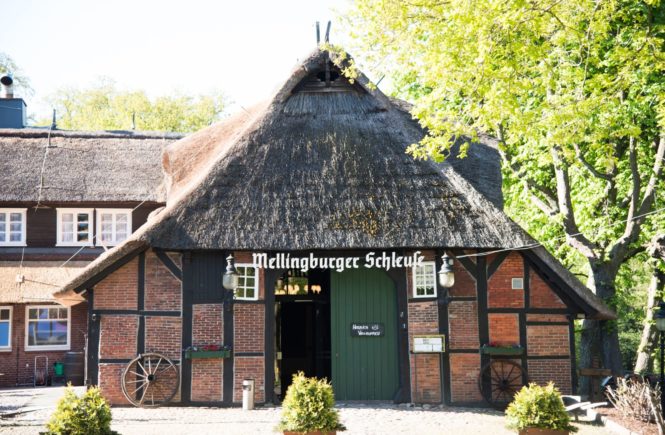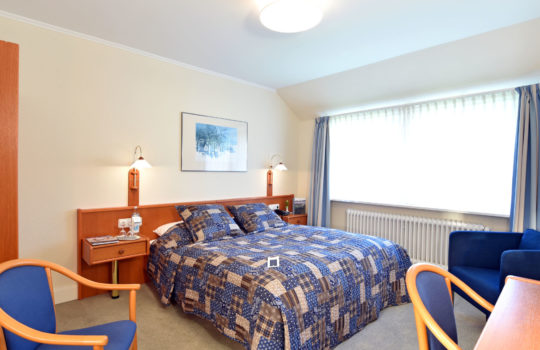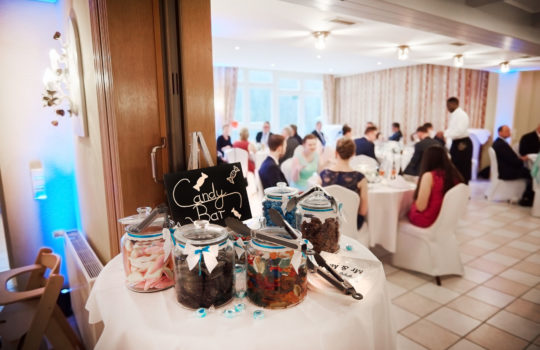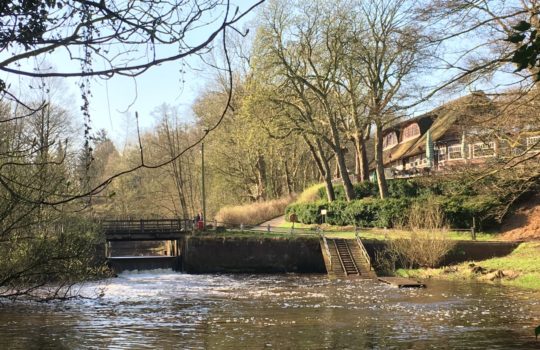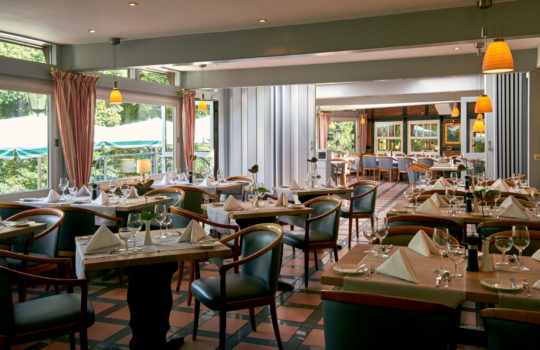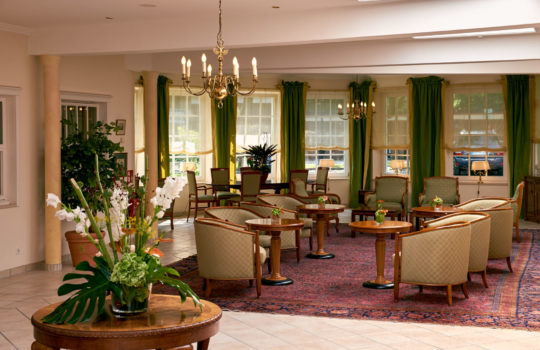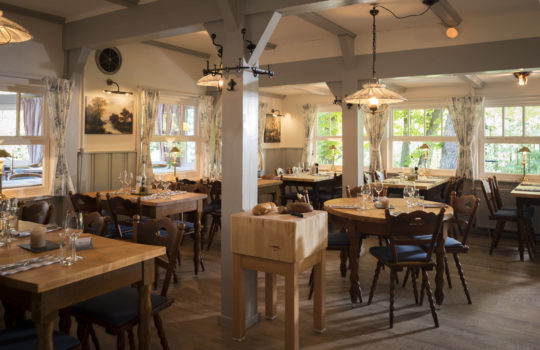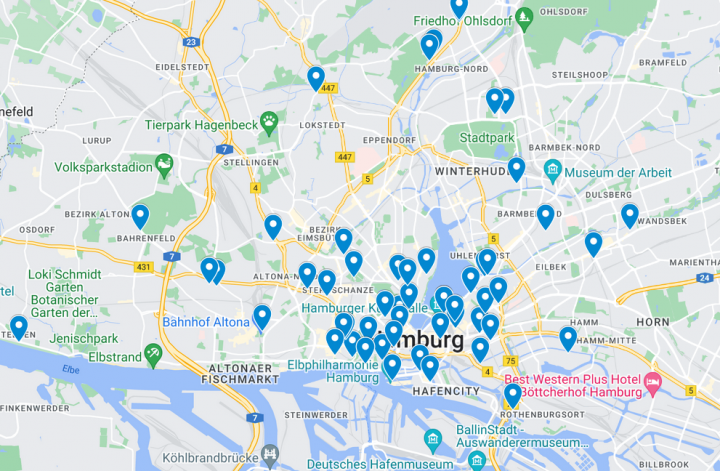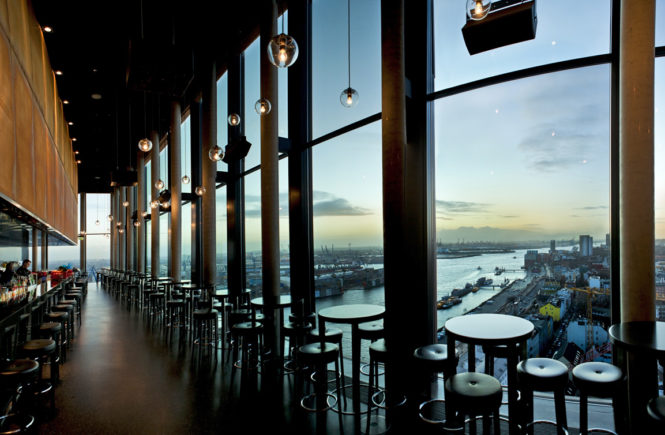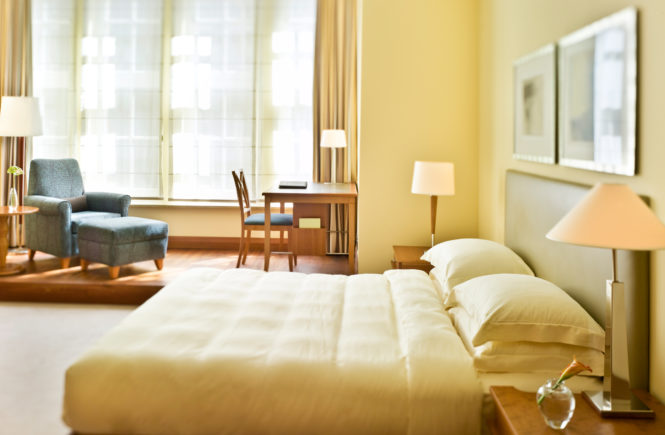The Mellingburger Schleuse is looking back on a long tradition: as one of Hamburg’s best known destinations and one of northern Germany’s oldest inns. The small building with a thatched roof was opened in 1717 and has been preserved to this day. Once a stopover on the arduous journey of the “Treidel” boat skippers, who would make a bed by the oven, the Mellingburger Schleuse is now a stately building complex including a hotel with 47 rooms hosting Hamburg’s oldest restaurant. This unique location is the perfect place to enjoy traditional hospitality by the river Alster and it’s surrounding parks, close to the city centre but away from the hustle and bustle of town.
Accommodation in the nature reserve of Hamburg’s Alster loop Combine a break in the green with a city trip to the metropolis Hamburg. You will be staying right in the nature reserve, by the Alster loop in the north of Hamburg. 47 friendly furnished rooms are idyllically located and yet close to the city. Enjoy a relaxing walk among high beeches by the river Alster, relax in our sauna and pool area or enjoy some local specialties in our restaurant.
Check out our special offers!
Here are some examples:
“Hamburg relaxed”
One night in a spacious double room
breakfast with our house sparkling
three course menu
fruit plate in your room
for 104 Euro per Person
“Hamburg Shopping”
two nights in a spacious double room
breakfast for two
welcome drink
three course menu
transfer to /from the Alstertal Shopping Center for EUR 153,00 per person

Kleinhuis Hotel Mellingburger Schleuse
Mellingburgredder 1
22395 Hamburg
Telefon: 040-611 39 150
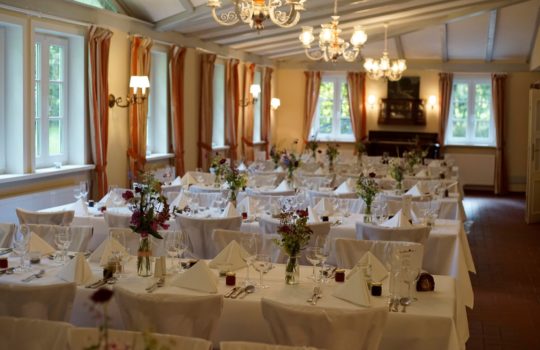
Some more information about the history and the location of the „Mellinburger Schleuse“:
During the middle ages the river Alster was of great importance for Hamburg’s foundation and development and served as a supplier of drinking water. The river was also an essential means of transport for wood, then used as building material and fuel. After Hamburg had joined the trade alliance of the “Hanse” in the 14th century the city council decided to enable trade on the river by aiming to build a canal between Hamburg and Lübeck in 1448. For this project it was necessary to dig a trench over eight kilometers. Furthermore nine locks had to be built in order to overcome a gradient of 17 meters. For each of the locks that were built around 1529 the Hamburg Council installed a paid lock keeper. Adjacent some of the locks a lock keeper house was built. In 1717 the lock keeper house by the Mellingburger Schleuse opened as an inn where the skippers could also rest. The barges (known as Alster rams) were pulled by men, women and horses. This tedious process was then referred to as “treideln”. The term “treideln” goes back on the Latin word “tragulare” which translates as towing.
The lock keeper’s job was to ensure a favorable water level by adjusting the weir. When the weir was opened the ships were floating to the next locks down the valley on the tidal wave. This descent with the flow of the river would take between two or three days, depending on the water level. The ascent up the river on the other hand was much more tedious and would take at least a week, with unfavorable water level the journey could take up to four weeks.
